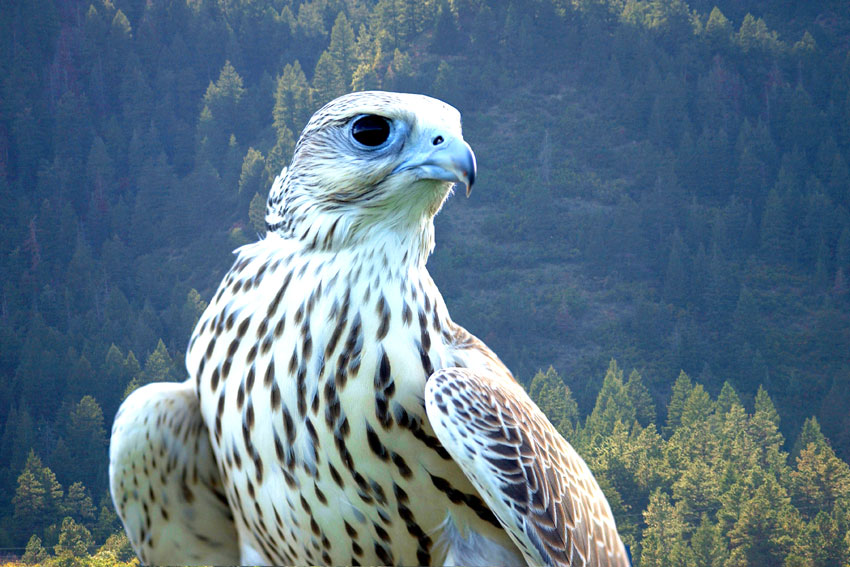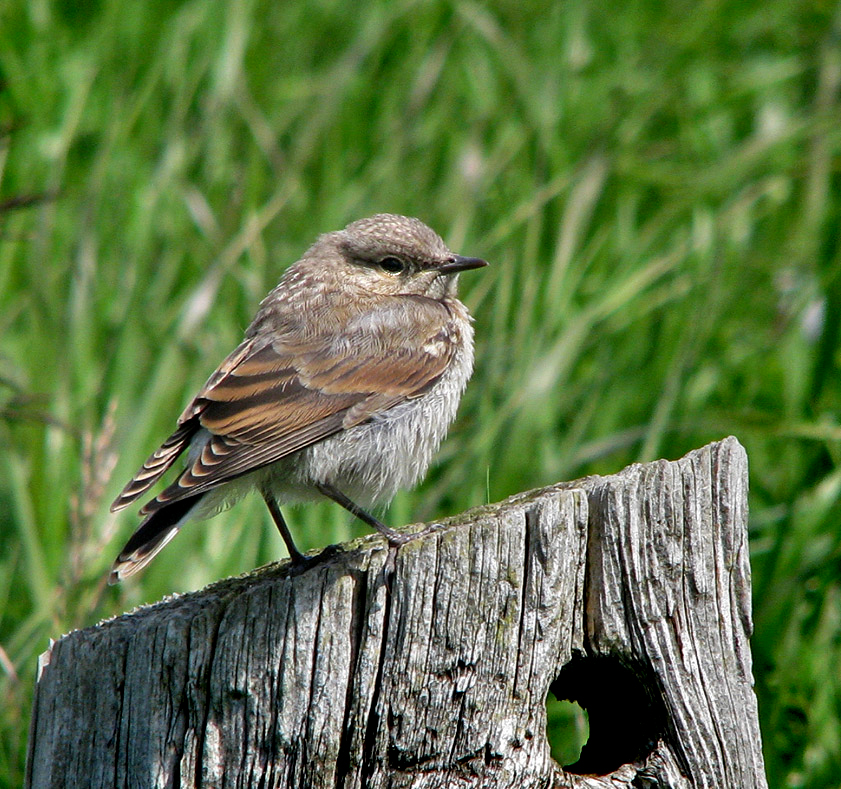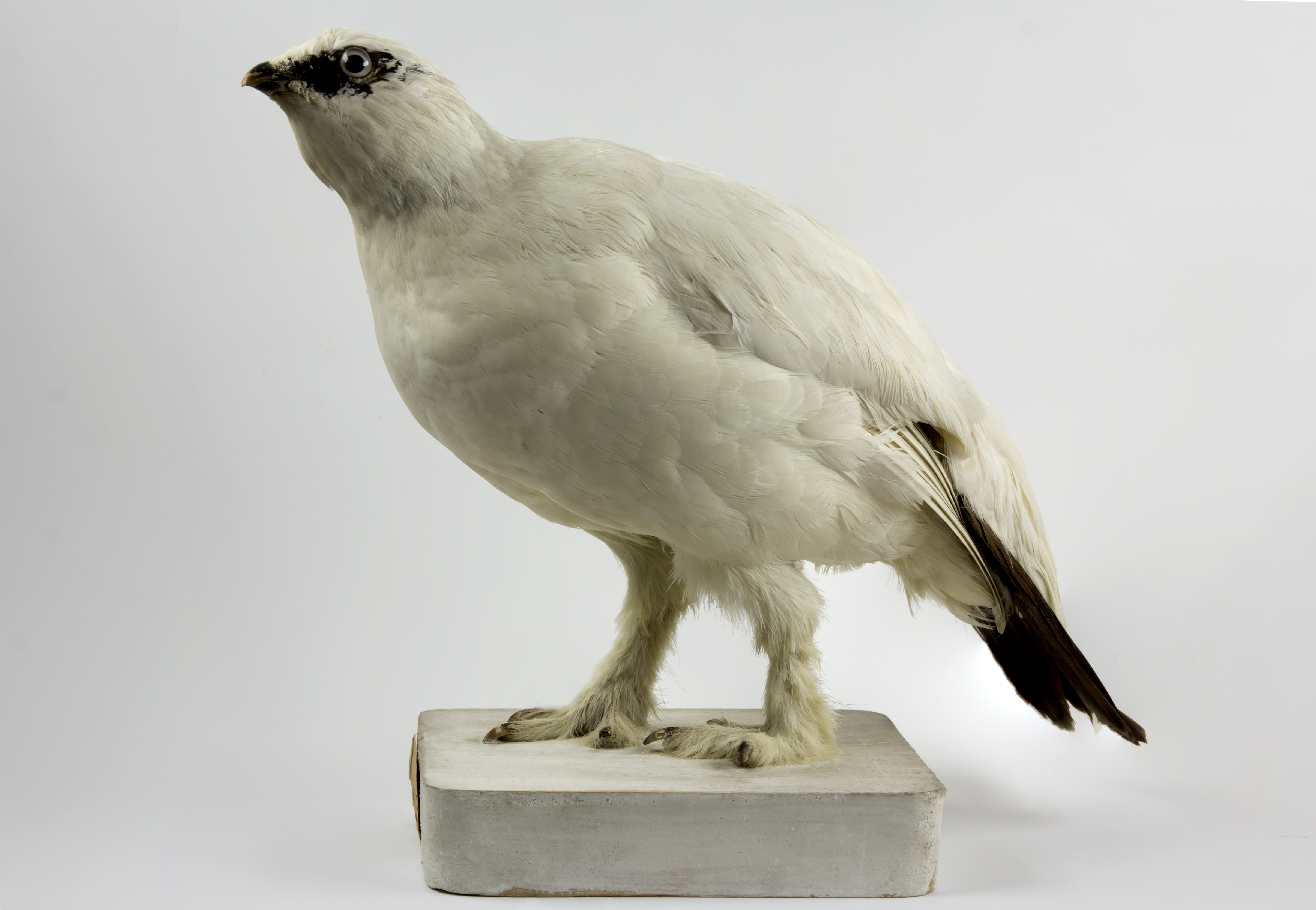|
Sylvia Grinnell Territorial Park
Sylvia Grinnell Territorial Park (known as ''Iqaluit Kuunga'' in the Inuktitut language) is a Canadian territorial park on Baffin Island in the province of Nunavut. Location and access The park is located 1 km away from Iqaluit, the capital of Nunavut territory, to the west. From the centre of Iqaluit it is an easy 30-minute walk. There are cabs available in Iqaluit as well. Area The park covers 148 hectares. History In 1861, American explorer Charles Francis Hall became the first non-indigenous person to journey to the area, when he reached the place with Inuit help. He became the first non-indigenous person to realise that Frobisher Bay was a bay and not a North-West passage route to China as was believed. He went on to name many places in the area after his financial backers. The Sylvia Grinnell river was named after the daughter of his friend and benefactor Henry Grinnell. The river lends its name to the park. Iqaluit in Inuktitut means 'place of many fish' a referen ... [...More Info...] [...Related Items...] OR: [Wikipedia] [Google] [Baidu] |
Canada
Canada is a country in North America. Its ten provinces and three territories extend from the Atlantic Ocean to the Pacific Ocean and northward into the Arctic Ocean, covering over , making it the world's second-largest country by total area. Its southern and western border with the United States, stretching , is the world's longest binational land border. Canada's capital is Ottawa, and its three largest metropolitan areas are Toronto, Montreal, and Vancouver. Indigenous peoples have continuously inhabited what is now Canada for thousands of years. Beginning in the 16th century, British and French expeditions explored and later settled along the Atlantic coast. As a consequence of various armed conflicts, France ceded nearly all of its colonies in North America in 1763. In 1867, with the union of three British North American colonies through Confederation, Canada was formed as a federal dominion of four provinces. This began an accretion of provinces an ... [...More Info...] [...Related Items...] OR: [Wikipedia] [Google] [Baidu] |
Gyrfalcon
The gyrfalcon ( or ) (), the largest of the falcon species, is a bird of prey. The abbreviation gyr is also used. It breeds on Arctic coasts and tundra, and the islands of northern North America and the Eurosiberian region. It is mainly a resident there also, but some gyrfalcons bird migration, disperse more widely after the breeding season, or in winter. Individual Vagrancy (biology), vagrancy can take birds for long distances. Its plumage varies with location, with birds being coloured from all-white to dark brown. These colour variations are called Polymorphism (biology), morphs. Like other falcons, it shows sexual dimorphism, with the female much larger than the male. For centuries, the gyrfalcon has been valued as a Falconry, hunting bird. Typical prey includes the ptarmigan and waterfowl, which it may take in flight; it also takes fish and mammals. Taxonomy and etymology The gyrfalcon was Species description, formally described by Swedish naturalist Carl Linnaeus in 1758 i ... [...More Info...] [...Related Items...] OR: [Wikipedia] [Google] [Baidu] |
Ellesmere Island
Ellesmere Island ( iu, script=Latn, Umingmak Nuna, lit=land of muskoxen; french: île d'Ellesmere) is Canada's northernmost and List of Canadian islands by area, third largest island, and the List of islands by area, tenth largest in the world. It comprises an area of , slightly smaller than Great Britain, and the total length of the island is . Lying within the Arctic Archipelago, Ellesmere Island is considered part of the Queen Elizabeth Islands. Cape Columbia at 83°06′ is the northernmost point of land in Canada and one of the northernmost points of land on the planet (the northernmost point of land on Earth is the nearby Kaffeklubben Island of Greenland). The Arctic Cordillera mountain system covers much of Ellesmere Island, making it the most mountainous in the Arctic Archipelago. More than one-fifth of the island is protected as Quttinirpaaq National Park. In 2021, the population of Ellesmere Island was recorded at 144. There are three settlements: Alert, Nunavut, Aler ... [...More Info...] [...Related Items...] OR: [Wikipedia] [Google] [Baidu] |
Canadian Broadcasting Corporation
The Canadian Broadcasting Corporation (french: Société Radio-Canada), branded as CBC/Radio-Canada, is a Canadian public broadcaster for both radio and television. It is a federal Crown corporation that receives funding from the government. The English- and French-language service units of the corporation are commonly known as CBC and Radio-Canada, respectively. Although some local stations in Canada predate the CBC's founding, CBC is the oldest existing broadcasting network in Canada. The CBC was established on November 2, 1936. The CBC operates four terrestrial radio networks: The English-language CBC Radio One and CBC Music, and the French-language Ici Radio-Canada Première and Ici Musique. (International radio service Radio Canada International historically transmitted via shortwave radio, but since 2012 its content is only available as podcasts on its website.) The CBC also operates two terrestrial television networks, the English-language CBC Television and the Frenc ... [...More Info...] [...Related Items...] OR: [Wikipedia] [Google] [Baidu] |
Peregrine Falcon
The peregrine falcon (''Falco peregrinus''), also known as the peregrine, and historically as the duck hawk in North America, is a Cosmopolitan distribution, cosmopolitan bird of prey (Bird of prey, raptor) in the family (biology), family Falconidae. A large, Corvus (genus), crow-sized falcon, it has a blue-grey back, barred white underparts, and a black head. The peregrine is renowned for its speed, reaching over during its characteristic hunting stoop (high-speed dive), making it the fastest bird in the world, as well as the Fastest animals, fastest member of the animal kingdom. According to a ''National Geographic (U.S. TV channel), National Geographic'' TV program, the highest measured speed of a peregrine falcon is . As is typical for avivore, bird-eating raptors, peregrine falcons are Sexual dimorphism, sexually dimorphic, with females being considerably larger than males. The peregrine's breeding range includes land regions from the Arctic tundra to the tropics. It can b ... [...More Info...] [...Related Items...] OR: [Wikipedia] [Google] [Baidu] |
Northern Wheatear
The northern wheatear or wheatear (''Oenanthe oenanthe'') is a small passerine bird that was formerly classed as a member of the thrush family Turdidae, but is now more generally considered to be an Old World flycatcher, Muscicapidae. It is the most widespread member of the wheatear genus ''Oenanthe'' in Europe and North and Central Asia. The northern wheatear is a migratory insectivorous species breeding in open stony country in Europe and east across the Palearctic with footholds in northeastern Canada and Greenland as well as in northwestern Canada and Alaska. It nests in rock crevices and rabbit burrows. All birds spend most of their winter in Africa. Taxonomy and systematics The northern wheatear was first formally described by the Swedish naturalist Carl Linnaeus in 1758 in the 10th edition of his ''Systema Naturae'' as ''Motacilla oenanthe''. The species is now placed in the genus '' Oenanthe'' that was introduced by the French ornithologist Louis Jean Pierre Vieill ... [...More Info...] [...Related Items...] OR: [Wikipedia] [Google] [Baidu] |
Lapland Longspur
The Lapland longspur (''Calcarius lapponicus''), also known as the Lapland bunting, is a passerine bird in the longspur family Calcariidae, a group separated by most modern authors from the Fringillidae (Old World finches). Etymology The English name refers to the long hind claws. The genus name ''Calcarius'' is from Latin ''calcaria'', "spurs", and the specific ''lapponicus'' refers to Lapland. Description The Lapland longspur is a robust bird, with a thick yellow seed-eater's bill. The summer male has a black head and throat, white eyestripe, chestnut nape, white underparts, and a heavily streaked black-grey back. Other plumages have a plainer orange-brown head, a browner back and chestnut nape and wing panels. Measurements: * Length: 5.9-6.3 in (15-16 cm) * Weight: 0.8-1.2 oz (22.3-33.1 g) * Wingspan: 8.7-11.4 in (22-29 cm) Distribution and habitat It breeds across Arctic Europe and the Palearctic and in Canada and the northernmost United States. It is migratory, winterin ... [...More Info...] [...Related Items...] OR: [Wikipedia] [Google] [Baidu] |
Red-throated Loon
The red-throated loon (North America) or red-throated diver (Britain and Ireland) (''Gavia stellata'') is a migratory aquatic bird found in the northern hemisphere. The most widely distributed member of the loon or diver family, it breeds primarily in Arctic regions, and winters in northern coastal waters. Ranging from in length, the red-throated loon is the smallest and lightest of the world's loons. In winter, it is a nondescript bird, greyish above fading to white below. During the breeding season, it acquires the distinctive reddish throat patch which is the basis for its common name. Fish form the bulk of its diet, though amphibians, invertebrates, and plant material are sometimes eaten as well. A monogamous species, red-throated loons form long-term pair bonds. Both members of the pair help to build the nest, incubate the eggs (generally two per clutch), and feed the hatched young. The red-throated loon has a large global population and a significant global range, though ... [...More Info...] [...Related Items...] OR: [Wikipedia] [Google] [Baidu] |
Semipalmated Sandpiper
The semipalmated sandpiper (''Calidris pusilla'') is a very small shorebird. The genus name is from Ancient Greek ''kalidris'' or ''skalidris'', a term used by Aristotle for some grey-coloured waterside birds. The specific ''pusilla'' is Latin for "very small". It is sometimes separated with other "stints" in ''Erolia,'' but, although these apparently form a monophyletic group, the present species' old genus ''Ereunetes'' had been proposed before ''Erolia''. Description It is a small sandpiper, 13–15 cm (5.1-5.9 in) long and weighing around 20-32 g (0.7-1.1 oz). Wingspan ranges from 13.8-14.6 in (35-37 cm). Adults have black legs and a short, stout, straight dark bill. The body is dark grey-brown on top and white underneath. The head and neck are tinged light grey-brown. This bird can be difficult to distinguish from other similar tiny shorebirds, in particular the western sandpiper; these are known collectively as "peeps" or "stints". Breeding and h ... [...More Info...] [...Related Items...] OR: [Wikipedia] [Google] [Baidu] |
Snow Bunting
The snow bunting (''Plectrophenax nivalis'') is a passerine bird in the family Calcariidae. It is an Arctic specialist, with a circumpolar Arctic breeding range throughout the northern hemisphere. There are small isolated populations on a few high mountain tops south of the Arctic region, including the Cairngorms in central Scotland and the Saint Elias Mountains on the southern Alaska-Yukon border, as well as the Cape Breton Highlands. The snow bunting is the most northerly recorded passerine in the world. Taxonomy The snow bunting was formally described by the Swedish naturalist Carl Linnaeus in 1758 in the tenth edition of his ''Systema Naturae''. He placed it with the buntings in the genus ''Emberiza'' and coined the binomial name ''Emberiza nivalis''. He specified the locality as Lapland. It is now placed in the genus ''Plectrophenax'' that was introduced in 1882 by the Norwegian born zoologist Leonhard Stejneger with the snow bunting as the type species. The genus name ''P ... [...More Info...] [...Related Items...] OR: [Wikipedia] [Google] [Baidu] |
Rock Ptarmigan
The rock ptarmigan (''Lagopus muta'') is a medium-sized game bird in the grouse family. It is known simply as the ptarmigan in the UK. It is the official bird for the Canadian territory of Nunavut, where it is known as the ''aqiggiq'' (ᐊᕿᒡᒋᖅ), and the official game bird for the province of Newfoundland and Labrador. In Japan, it is known as the ''raichō'' (雷鳥), which means "thunder bird". It is the official bird of Gifu, Nagano, and Toyama Prefectures and is a protected species nationwide. Unlike many arctic bird species, ptarmigan do not gain substantial mass to hibernate over winter. Etymology The ptarmigan's genus name, ''Lagopus'', is derived from Ancient Greek ''lagos'' (λαγώς ''lagṓs''), meaning "hare", + ''pous'' (πούς ''poús''), "foot", in reference to the bird's feathered legs. The species name, ''muta'', comes from New Latin and means "mute", referring to the simple croaking song of the male. It was for a long time misspelt ''mutus'', in the ... [...More Info...] [...Related Items...] OR: [Wikipedia] [Google] [Baidu] |
Horned Lark
The horned lark or shore lark (''Eremophila alpestris'') is a species of lark in the family Alaudidae found across the northern hemisphere. It is known as "horned lark" in North America and "shore lark" in Europe. Taxonomy, evolution and systematics The specific ''alpestris'' is Latin and means "of the high mountains", from ''Alpes'', the Alps. The horned lark was originally classified in the genus '' Alauda''. The horned lark is suggested to have diverged from Temminck's lark (''E. bilopha'') around the Early-Middle Pleistocene, according to genomic divergence estimates. The horned lark is known from around a dozen localities of Late Pleistocene age, including those in Italy, Russia, The United Kingdom and the United States. The earliest known fossil is from the Calabrian of Spain, around 1–0.8 million years old. In 2020, a 46,000 year old frozen specimen was described from the Russian Far East. Recent genetic analysis has suggested that the species consists of six clades ... [...More Info...] [...Related Items...] OR: [Wikipedia] [Google] [Baidu] |







